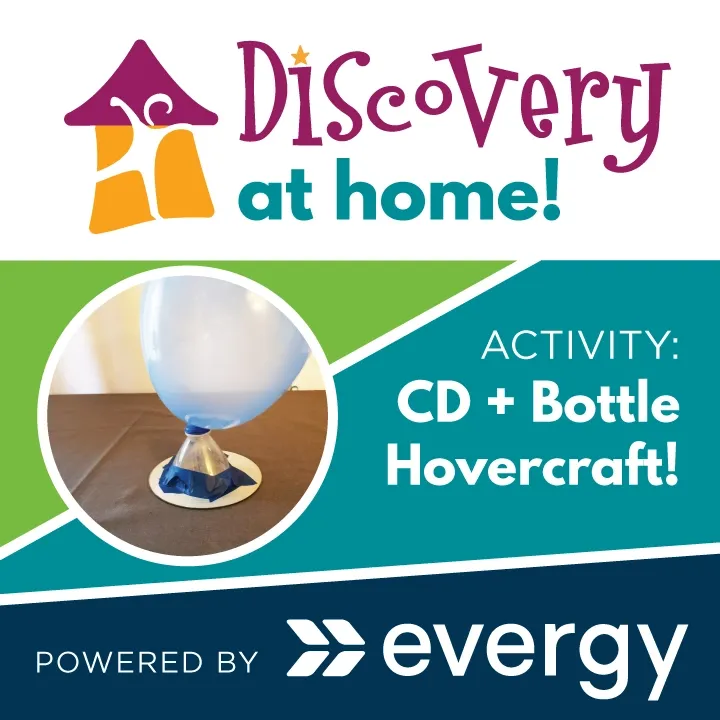Blown away!
Make a tabletop hovercraft with Caitlin Luttjohann, Director of STEAM Education at the Kansas Children’s Discovery Center. In this activity, kids explore the power of air and the impact of friction! When the air is forced out of the bottle, it creates a moving cushion of air that reduces friction and allows the CD to glide freely. This activity is powered by our friends at Evergy.

What you need:
- CD.
- Balloon.
- Recycled bottle.
- Tape.
Directions:
- Cut the top portion off of the bottle (about an inch and half from the top). Air will go through the space where the lid goes. We will use the top part of the bottle in this activity, you can save the rest of the bottle for another project!
- Tape the larger opening of the bottle to the label side of the CD so it covers the hole in the center.
- Tape the bottle enough so that air does not leak out from the sides.
- Air up a balloon and twist the opening so air does not immediately escape.
- While the balloon is twisted shut, stretch the end of the balloon over the opening of the bottle.
- Set the hovercraft on a smooth surface and untwist the balloon so the air moves out of the balloon, through the bottle, and escapes through the bottom of the CD.
- Tap the hovercraft to move it across the table.
Ways to Expand the Activity:
- Turn it into a game! When the hovercraft is flying over the table, pass it back and forth with someone else.
- Create a tabletop obstacle course, and direct the hovercraft through the course.
What Kids Learn:
- Kids explore the power of air and the impact of friction! When the air is forced out of the balloon, the air has less space inside the bottle. The force created pushes the bottle upward. When the air is forced out of the bottle, it creates a moving cushion of air that reduces friction and allows the CD to glide freely.
- Experimentation! When kids experiment, they’re learning how to learn. Failure is an important part of experimenting, so let kids try things that won’t work. It’s how they figure things out!
- Basic engineering skills. Engineers solve problems with constraints. They learn to solve problems by using the engineering design process: asking questions, coming up with solutions, building, testing and improving.
Vocabulary:
- Constraint. A limitation or restriction. Materials, time and space are common constraints. Real engineers have to work around constraints all the time!
- Air pressure. The weight of air molecules. Air moves from areas of high pressure to areas of low pressure. The same phenomenon that causes your CD to float is what causes weather, like wind, tornadoes and hurricanes.
- Friction. The resistance caused by objects rubbing together.
- Force. Energy caused by a push, pull, or gravity.